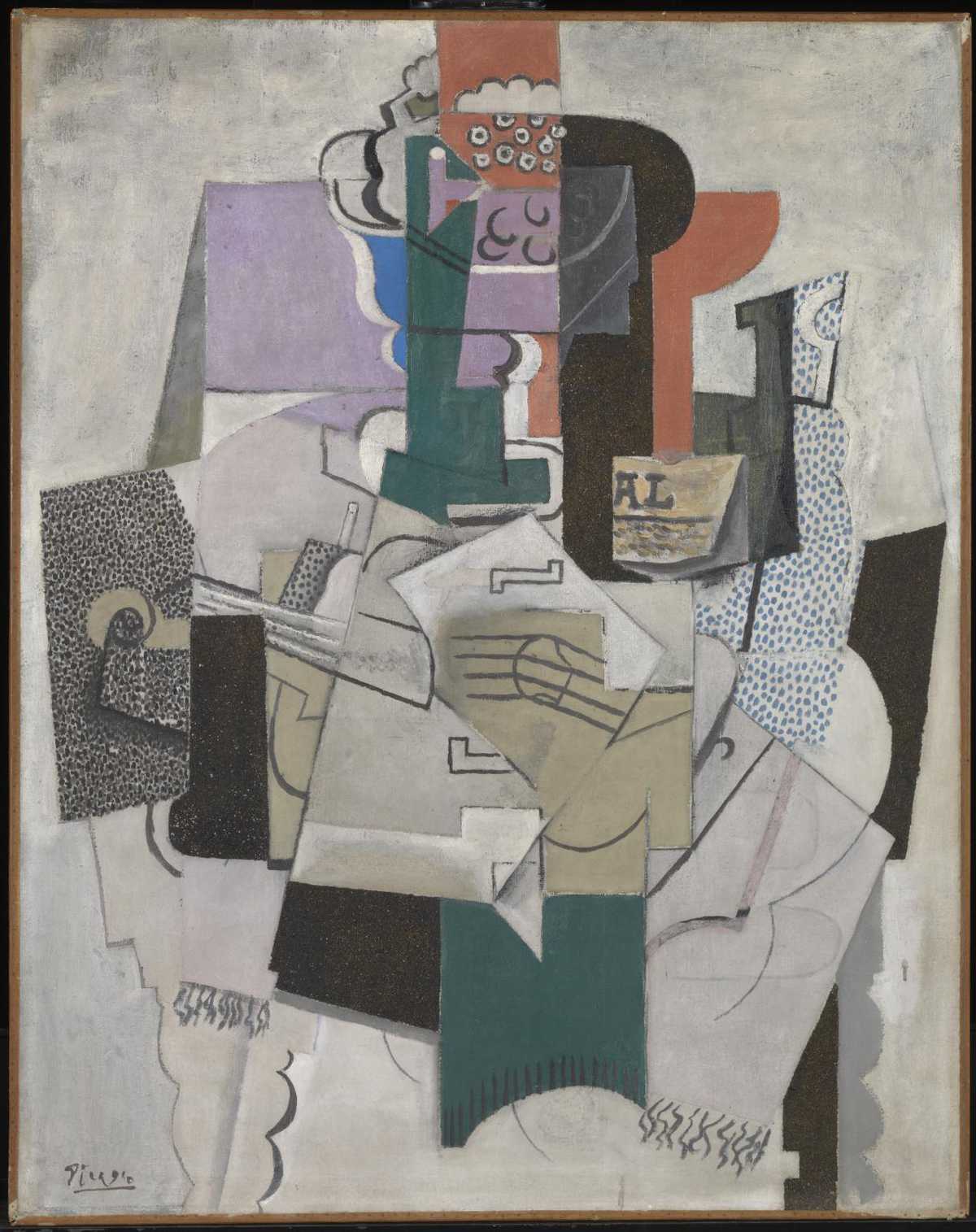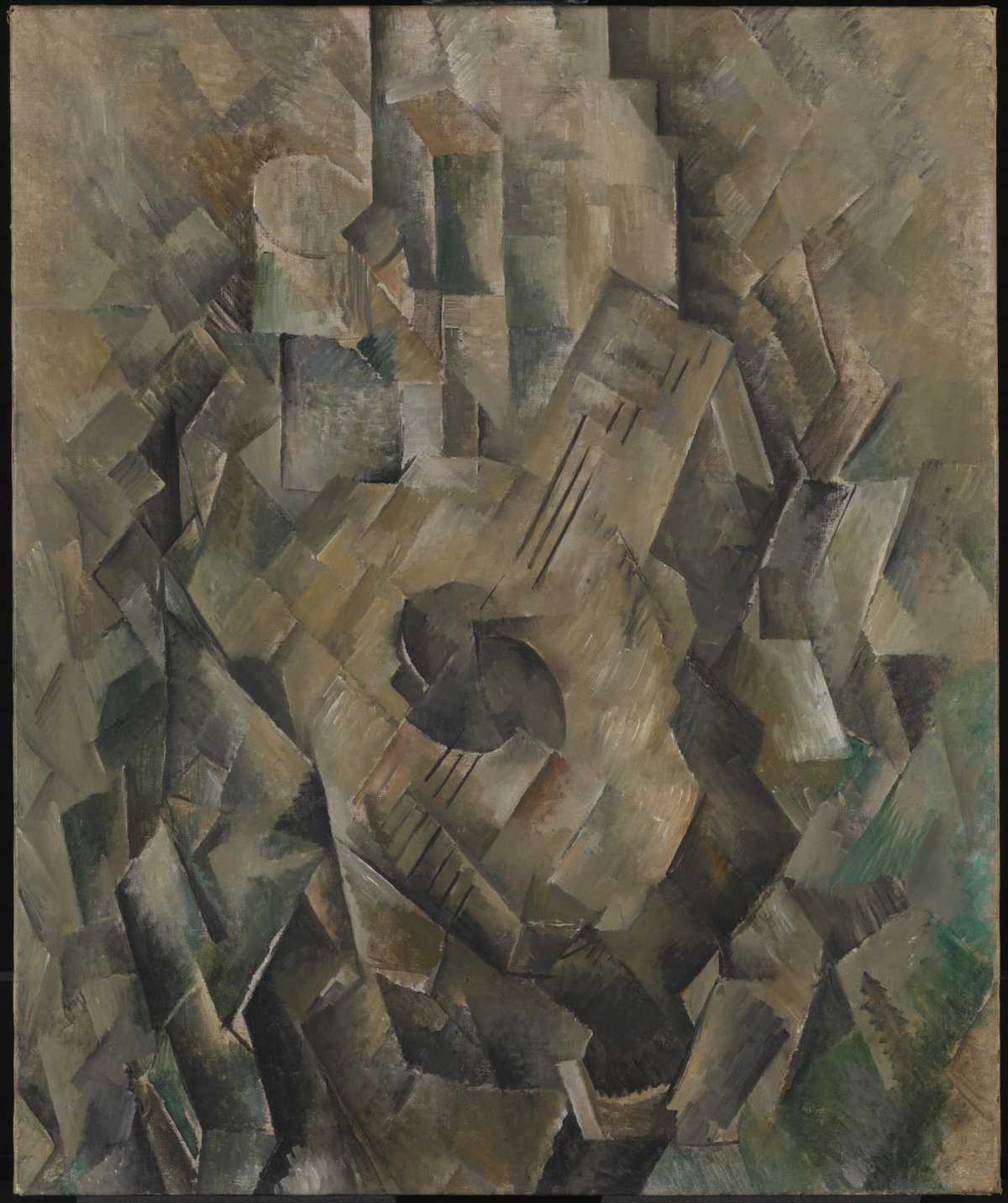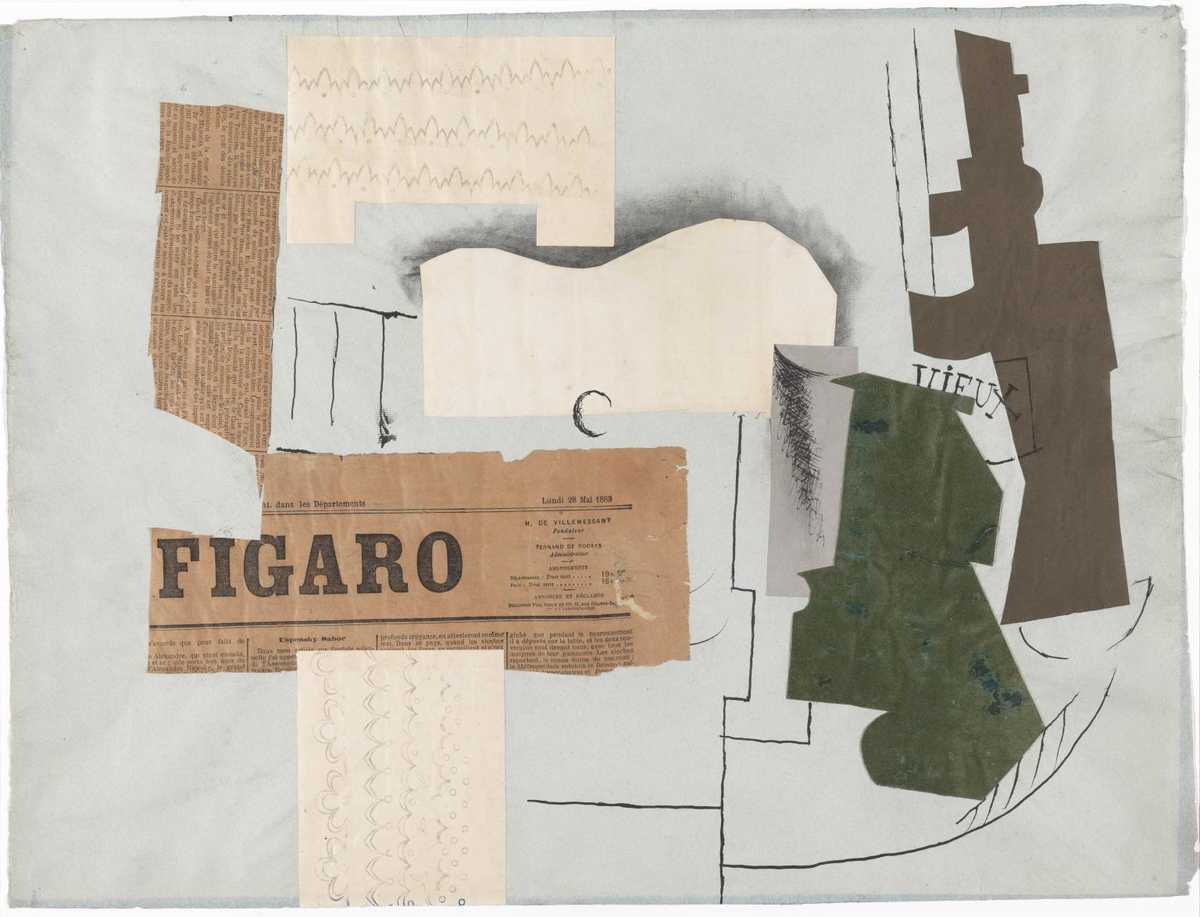Lesson: History of art, Cubism
Cubism
The first Cubist exhibition took place in 1911. Picasso and Bruque started it. It was inspired by Cezanne’s use of multiple viewpoints in a single painting. Cubist artists used geometric shapes, interlocking planes, and, later, collage.

Breaking Down Shapes:
Cubism involves breaking traditional forms into smaller geometric shapes. Artists take objects and subjects apart, showing them from different angles at the same time.
Many Points of View:
Instead of sticking to one fixed viewpoint, Cubist artists use multiple perspectives in their art. This approach, called simultaneity, lets them capture various aspects of an object or scene in one picture.
A Cubist painting allows viewers to see all sides of a 3-dimensional object at the same time in a 2-dimensional space.
Cubism can be seen to have developed in two distinct phases:
the initial and more austere analytical cubism, and a later phase of cubism known as synthetic cubism.

Analytical cubism ran from 1908–12. Its artworks look more severe and are made up of an interweaving of planes and lines in muted tones of blacks, greys, and ochres.

Synthetic cubism is the later phase of cubism, generally considered to date from about 1912 to 1914 and characterized by simpler shapes and brighter colours. Synthetic cubist works also often include collaged real elements such as newspapers. The inclusion of real objects directly in art was the start of one of the most important ideas in modern art.